For 10 years we have traveled around the south of Spain, trying to sample the best that this firmly agricultural region has to offer. Olive oil, cheese, numerous fruits and vegetables, white and red wine are all part of its gastronomic heritage, appreciated by the Andalusians and even recognised beyond the peninsula.
As for the cured meats, they deserve a special mention: used in a huge variety of culinary specialties, adored in every province and town, they are consumed across Spain. Salamanca, Extremadura, Trevélez, Teruel, Córdoba... are some of the main names of cured ham that we have had the pleasure of tasting. However, the proximity of Seville to Jabugo (1h30 by road) allowed TAPAS shop to really discover the know-how, a brand, and an entire ecosystem whose center is simply Iberian pork.
We work with farmers and pork butchers who put quality first. In a program broadcast by TVE on 19 April 2015, two of our producers were featured.
Producers rigorously selected
What do we call iberian ham and iberian cured meats?
Spanish cured meats are recognized and appreciated in many countries. Among Serrano ham, the bellota, the cebo, and many other designations, the consumer can easily get lost and in a wide range of prices and qualities.
How to navigate among all labels and denominations?
- Iberian acorn ham & Cured meats selected by Tapas Shop
- Serrano, iberico, Pata Negra, Bellota... some definitions
- Raising Iberian pigs - The pig in the "Dehesa" (meadow)
- Frequently Asked Questions about spanish cured ham and meats
Cured meats begin their way in the sierra (mountains), The good charcuterie starts its course in the Sierra (mountain), and in Spain the relief is quite present, either in the north with the Picos de Europa, Cantabrian Mountains and Pais Vasco country, or in the south in Andalusia (3,500m for the Sierra de Granada). Large natural areas are preserved and still allow extensive livestock breeding. The Iberian pig is one of the main protagonists of those spaces. Although it represents a minority of Spanish cured meats (about 10%), it is internationally recognized and remains a reference in the culinary world, synonymous of good taste, tradition and quality.
Numerous designations mark the territory include that of Guijelo (where comes the Joselito) near Salamanca, that of Trevelez (south of Sierra Nevada), Extramadura, Sierra Morena... and of course the one from Huelva, where delicatessen products are sold on this shop.
This ham, known as "Pata Negra" is derived from pigs with the best pedigrees, is the most popular Sevillian gift for the Christmas period. This is an Iberian pork that feeds on acorns during the fattening period. The curing process depends on the weight and heat of the summer, that makes the hams sweat.
Did you know?
Although the Montanera (the period when Iberian pigs eat acorns) officially begins on 1 October, there is an old Spanish saying: "Desde San Miguel montanera es" (The Montenera begins on St Michael's Day).
When the Montanera arrives, the sessile oak (Quercus faginea) is the first tree to bear fruit on the ground. Next comes the holm oak (Quercus ilex), which bears the sweetest and tastiest fruit. Lastly, the cork oak (Quercus suber) or ‘chaparro’, whose fruit is more bitter, but also more resistant and long-lasting. The carrasca, a variant of the holm oak, which belongs to the undergrowth, also provides a small acorn that pigs generally do not eat, except when they are very hungry.
Acorns are rich in potassium, phosphorus and calcium. It contains water, carbohydrates and fibre.
The last feeding period for 1.5% of Iberian pigs slaughtered in Spain is the montanera. Normally, pigs enter this feeding period at 9 arrobas in weight and between 18 and 22 months of age, before going straight to the slaughterhouse with an average of 15 arrobas (from a pig of 15 arrobas, you get two hams weighing 7.5 kg). The arroba is an ancient unit of measurement, weighing between 11 and 12 kilos depending on the region.
The animals usually eat between 7 and 10 kilos of acorns and around 3 kilos of herbs a day.
In their daily search for the precious fruit, these ‘sporty’ animals generally walk up to 15 kilometres a day.

Latest news
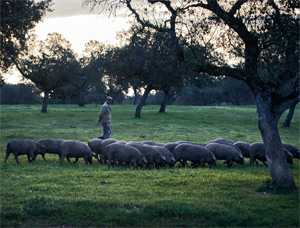
Closure of #Montanera 2024/2025
03/03/2025
The 2024/2025 #Montanera closes with 580,665 acorn-fed pigs slaughtered (bellota), 2% less than last year.
Calculate the number of Iberian hams that will be available in 3 years' time...
A campaign marked by stability and quality, a guarantee for the production of extraordinary bellota Iberian hams in the years to come.
Of the pigs slaughtered, 66.73% were 100% Iberian (black label) and 33.27% were 75% and 50% Iberian.
Breakdown of slaughterings by community:
- Andalousia : 277 784 (+3,11%) | 47,84%.
- Extremadura: 209 330 (-10,02%) | 36,05%.
- Castilla y León : 53.338 (+3,11%) | 9,19%.
- Castilla-La Mancha : 8.543 (+19,65%) | 1,47%.
- Portugal : 31.638 (+1,07%) | 5,45%.
With regard to protected designations of origin, according to ITACA records, a total of 84,367 acorn-fed pigs (and PDO-labelled pigs) were certified this season, representing 14.5% of the total number of acorn-fed animals.
Of these pigs, 83.9% were fed with 100% Iberian acorns and 16.1% with 75% Iberian acorns.

The Consorcio del Jamón Serrano Español celebrates its 35th anniversary
23/01/2025
The entity created the Consorcio Serrano seal and a quality regulation to have an institutional distinctive that would be in charge of identifying those pieces elaborated in accordance with the demanding quality standards of the association and that passed the quality and selection controls established for the exportation of the product.
Since it began its activity, the Consorcio del Jamón Serrano Español has stamped a total of 19,592,024 pieces under its 100% Spanish quality and authenticity guarantee, which is estimated at between 30% and 35% of the volume of high-quality Serrano ham exported.

The Jabugo PDO certifies 87 583 pieces "100% acorn-fed Iberian" in 2023 (37 932 hams and 49 651 shoulders).
26/01/2024
According to the records, as of 31 December 2023, 380 dehesas located in Extremadura and Andalusia have participated in the montanera, and throughout the year 35 processing companies (slaughterhouses, cutting plants, dryers and wineries) located in the 31 municipalities around the Sierra de Aracena y Picos de Aroche Natural Park, whose dehesas have been declared a Biosphere Reserve by UNESCO, have taken part in the montanera: Aracena, Aroche, Corteconcepción, Cortegana, Cumbres Mayores, Galaroza, Higuera de la Sierra, Santa Olalla del Cala and Jabugo itself.
>> DOP Jabugo

XI gastronomic days and X national ham cutting competition
17/05/2023
Considered the best ham cutting competition in 2022 by the National Association of Ham Cutters (ANCJ), this is an event not to be missed. On 16, 17 and 18 June 2023, this tenth annual national competition annual national competition will take place in Corteconcepción.
Inscription : la mairie de Corteconcepción (Huelva) a ouvert le 15 mai 2023 la période d'inscription au 10e concours national de coupeurs et trancheurs de jambon.
As every year, eight professionals will compete for the coveted title, which again qualifies for the Spanish championship in 2024, meaning that the winner will have a direct pass to the national final. For this reason, one of the requirements for participating is to be a member of the National Cutters Association.
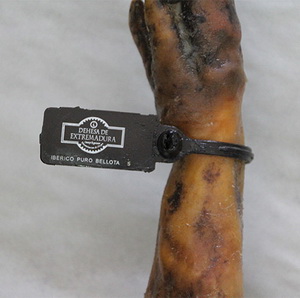
100% Iberian production for the Dehesa de Extremadura PDO
04/05/2023
From now on, the Dehesa de Extremaduradesignation will only admit 100% Iberian hams and shoulders. Once the period of allegations has passed and the Junta has given its approval, the only thing left to do is to send the proposal to the European Commission. These conditions will be in place for the next "montanera". Dehesa de Extremadura wants to increase the excellence of its products and eliminate the possibility that they come from pigs that have a minimum of 75% Iberian breed. These conditions are already applied in the designations of Los Pedroches (Córdoba), Jabugo (Huelva). Only the designations Dehesa de Extremadura and Guijuelo are missing.
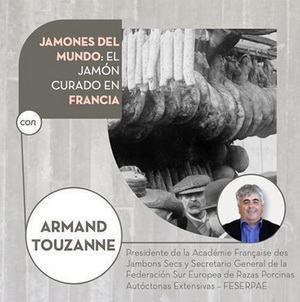
Hams of the world: cured ham in France
04/05/2023
In this conference organised by the Monte Nevado Ham Campus, Armand Touzanne (President of the Académie Française des Jambons Secs and Secretary General of the Federación Sur Europea de Razas Porcinas Autóctonas Extensivas - FESERPAE) will talk about the ham culture in France, and we will learn more about the most important PGIs and PDOs in that country.
On-site and virtual event, Thursday 4 May at 5pm. To register or watch the conference online, more information here.
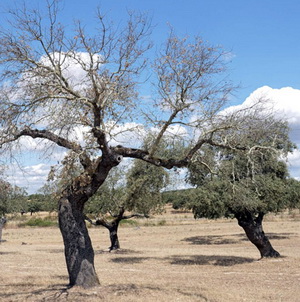
Drought a risk factor for acorn-fed Iberian ham production
13/03/2023
According to forecasts by the Interprofessional Association of Iberian Pigs (ASICI), the slaughter of acorn-fed Iberian pigs in Spain in the 2022-2023 season will be 15-20% lower than in the 2021-2022 season. This decrease is between 10 and 40% depending on the farming area.
The drought has had a direct impact on the "dehesa", with a 20-25% reduction in acorn production per hectare, which has reduced the number of pigs that can be taken to the "montanera".
This lack of rain has delayed slaughter as in order to achieve optimum fattening of acorn-fed pigs and to meet the required quality standards, they have been grazing more hectares this year where they must spend a minimum of 61 to 90 days. This situation will reduce the supply of Iberian pigs and Iberian ham.
>> La sequía un factor de riesgo para la producción de jamón ibérico de bellota
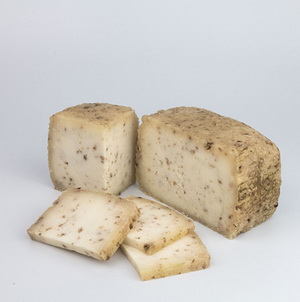
All-Ballut, cured acorn cheese
05/03/2023
The Pedroches valley is famous for its dehesa (vast oak forests) and for its cattle. The "All-Ballut" cheese combines the acorns of its oaks with the milk of its cows.
The first acorn cheese in the world, made by the artisan cheese factory Plazuelo (Villaralto, Córdoba), is made exclusively with raw milk from local cows and acorns from the Vallesana dehesa.
It is a seasonal cheese; during the months of December and January, the acorns are harvested, peeled, roasted and ground. On the day the cheese is made, they are incorporated into the cheese itself before it is moulded.
The result is a blend of the creaminess of the cheese and the flavour of the acorn.
>> El primer queso de bellota del mundo vuelve al mercado desde Los Pedroches tras agotarse en 2022

Fourth International Iberian Cured Iberian Meat Forum, "cuisine and research".
14/10/2023
30 -31 October 2023. Two days dedicated to the study and dissemination of Iberian cuisine by the best professionals in the sector.
Iberian ham will once again place Salamanca on the international gastronomy scene. The official programme of the 4th International Ibérico Forum to be held on 30 and 31 October at the Centro Internacional del Español has been given a new twist, promoting this event which has already become one of the gastronomic events of reference, with the presence of half a dozen Michelin-starred names and the best experts and specialists in Ibérico.
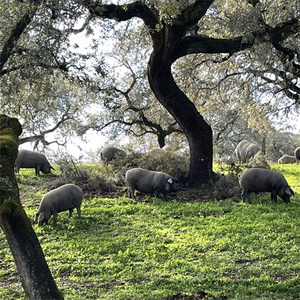
La Montanera 2022/2023: fewer bellota pigs
11/01/2024
This year's figures reflect a 12.6% reduction in the slaughter of acorn-fed pigs compared with the previous season, i.e. 86,215 fewer animals.
According to data recorded by ÍTACA (Identification, Traceability and Quality System), 596,274 acorn-fed pigs were slaughtered in the 2022/2023 season, compared with 682,489 animals slaughtered in the previous season (2021/2022).
Of the total number of animals slaughtered, 86.7% (516,985 animals) were acorn-fed pigs under the "black or red label" quality standard, and 13.3% (79,289 animals) were PDO production (labelled black label: Jabugo, Los Pedroches, etc.).
Of the total number of pigs slaughtered in 2022-2023, 62.1% will be black pigs (370,560), 100% Iberian, and 37.8% red-label pigs, of which 7% will be 75% Iberian bellota quality (41,824 animals) and the remaining 30.8% (183,886 animals) 50% Iberian bellota quality.
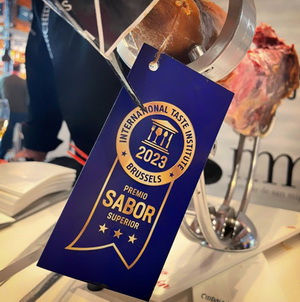
Spanish ham declared best flavour 2023
22/02/2023
The International Taste Institute (ITI) in Brussels has chosen a 100% Iberian bellota ham rom Monesterio (Badajoz) as the best taste in the world in 2023.
The cutter Florencio Sanchidrián declared it to be one of the best hams he has ever cut, and 200 chefs who took part in the tasting were also convinced

Montanera 2022/23
31/01/2023
The number of "100% Ibérico de Bellota" pigs identified in the dehesas registered during the montanera 2022/23, i.e. during last autumn, was 25,272!
The number of pieces certified as Jabugo PDO in the year 2022 was 81 633: 41 930 hams and 39 703 shoulders. This figure refers to cured hams and shoulders whose production process began in the years prior to 2022.
 fr
fr en
en es
es
